Unsupervised Morphological Paradigm Completion
May 03, 2020Huiming Jin, Liwei Cai, Yihui Peng, Chen Xia, Arya D. McCarthy, Katharina Kann
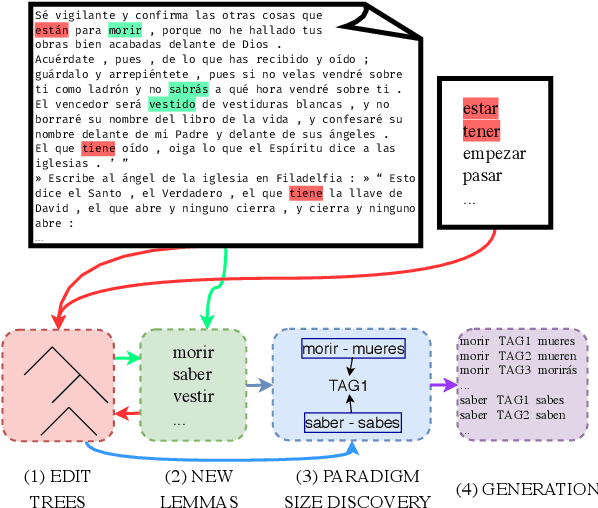
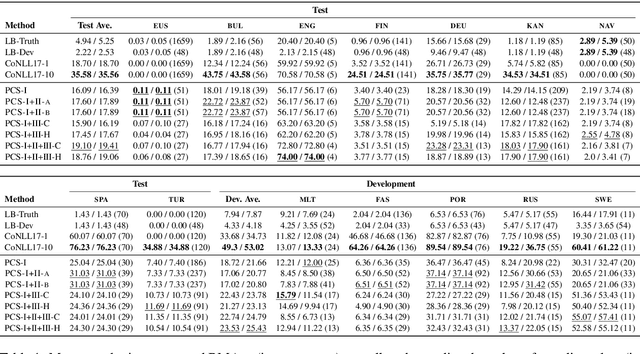
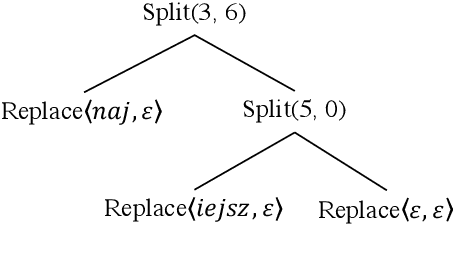
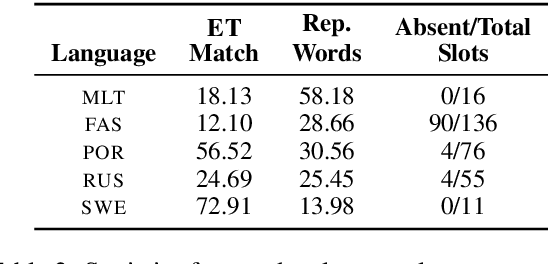
We propose the task of unsupervised morphological paradigm completion. Given only raw text and a lemma list, the task consists of generating the morphological paradigms, i.e., all inflected forms, of the lemmas. From a natural language processing (NLP) perspective, this is a challenging unsupervised task, and high-performing systems have the potential to improve tools for low-resource languages or to assist linguistic annotators. From a cognitive science perspective, this can shed light on how children acquire morphological knowledge. We further introduce a system for the task, which generates morphological paradigms via the following steps: (i) EDIT TREE retrieval, (ii) additional lemma retrieval, (iii) paradigm size discovery, and (iv) inflection generation. We perform an evaluation on 14 typologically diverse languages. Our system outperforms trivial baselines with ease and, for some languages, even obtains a higher accuracy than minimally supervised systems.
Intermediate-Task Transfer Learning with Pretrained Models for Natural Language Understanding: When and Why Does It Work?
May 01, 2020Yada Pruksachatkun, Jason Phang, Haokun Liu, Phu Mon Htut, Xiaoyi Zhang, Richard Yuanzhe Pang, Clara Vania, Katharina Kann, Samuel R. Bowman
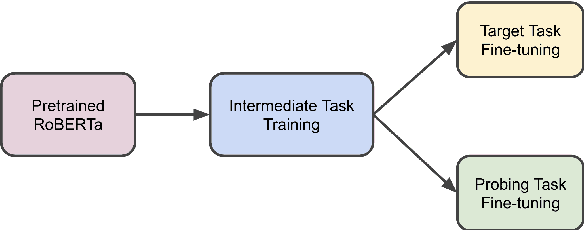
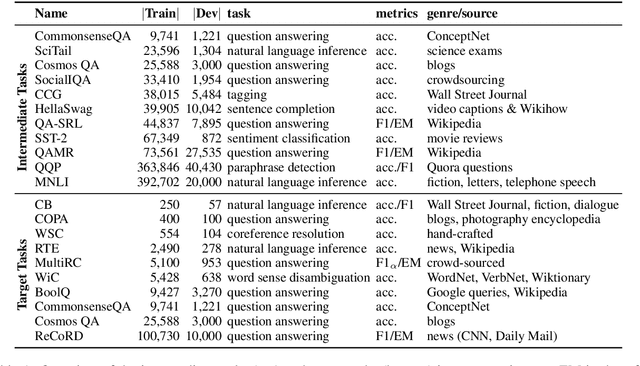
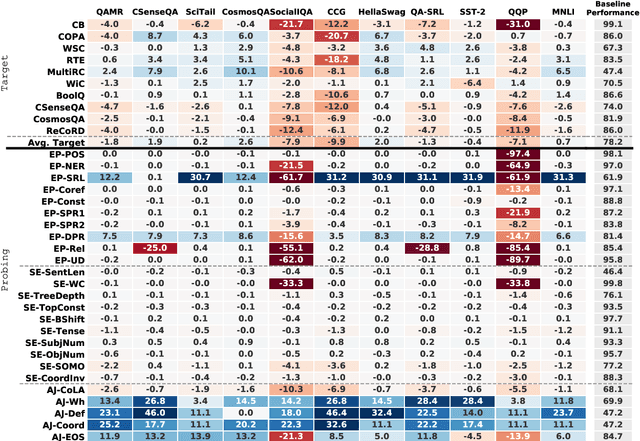
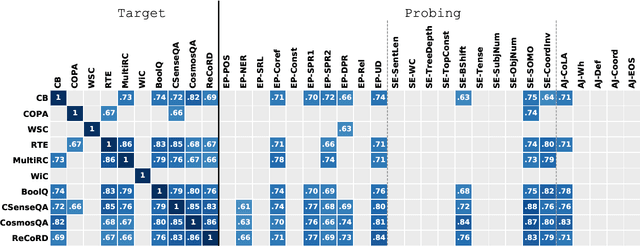
While pretrained models such as BERT have shown large gains across natural language understanding tasks, their performance can be improved by further training the model on a data-rich intermediate task, before fine-tuning it on a target task. However, it is still poorly understood when and why intermediate-task training is beneficial for a given target task. To investigate this, we perform a large-scale study on the pretrained RoBERTa model with 110 intermediate-target task combinations. We further evaluate all trained models with 25 probing tasks meant to reveal the specific skills that drive transfer. We observe that intermediate tasks requiring high-level inference and reasoning abilities tend to work best. We also observe that target task performance is strongly correlated with higher-level abilities such as coreference resolution. However, we fail to observe more granular correlations between probing and target task performance, highlighting the need for further work on broad-coverage probing benchmarks. We also observe evidence that the forgetting of knowledge learned during pretraining may limit our analysis, highlighting the need for further work on transfer learning methods in these settings.
Weakly Supervised POS Taggers Perform Poorly on Truly Low-Resource Languages
Apr 28, 2020Katharina Kann, Ophélie Lacroix, Anders Søgaard
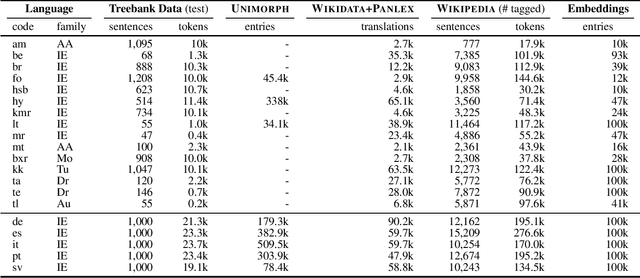
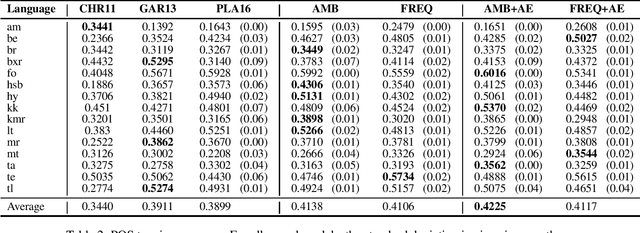
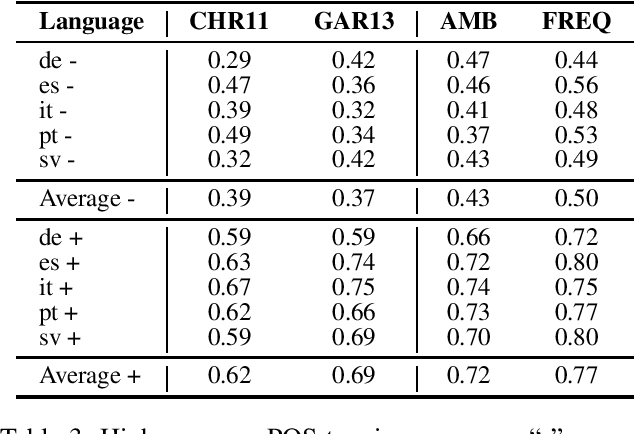
Part-of-speech (POS) taggers for low-resource languages which are exclusively based on various forms of weak supervision - e.g., cross-lingual transfer, type-level supervision, or a combination thereof - have been reported to perform almost as well as supervised ones. However, weakly supervised POS taggers are commonly only evaluated on languages that are very different from truly low-resource languages, and the taggers use sources of information, like high-coverage and almost error-free dictionaries, which are likely not available for resource-poor languages. We train and evaluate state-of-the-art weakly supervised POS taggers for a typologically diverse set of 15 truly low-resource languages. On these languages, given a realistic amount of resources, even our best model gets only less than half of the words right. Our results highlight the need for new and different approaches to POS tagging for truly low-resource languages.
Learning to Learn Morphological Inflection for Resource-Poor Languages
Apr 28, 2020Katharina Kann, Samuel R. Bowman, Kyunghyun Cho
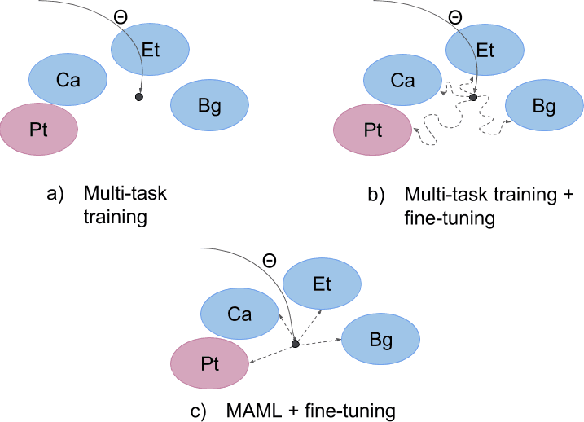
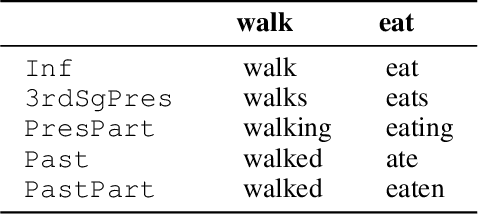
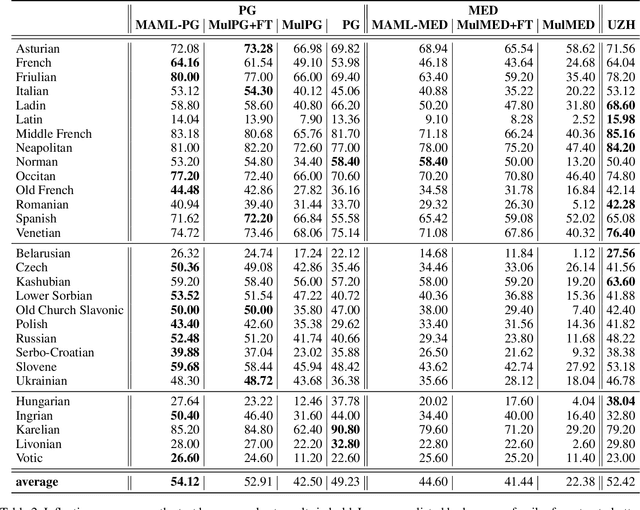

We propose to cast the task of morphological inflection - mapping a lemma to an indicated inflected form - for resource-poor languages as a meta-learning problem. Treating each language as a separate task, we use data from high-resource source languages to learn a set of model parameters that can serve as a strong initialization point for fine-tuning on a resource-poor target language. Experiments with two model architectures on 29 target languages from 3 families show that our suggested approach outperforms all baselines. In particular, it obtains a 31.7% higher absolute accuracy than a previously proposed cross-lingual transfer model and outperforms the previous state of the art by 1.7% absolute accuracy on average over languages.
Grammatical Gender, Neo-Whorfianism, and Word Embeddings: A Data-Driven Approach to Linguistic Relativity
Oct 22, 2019Katharina Kann


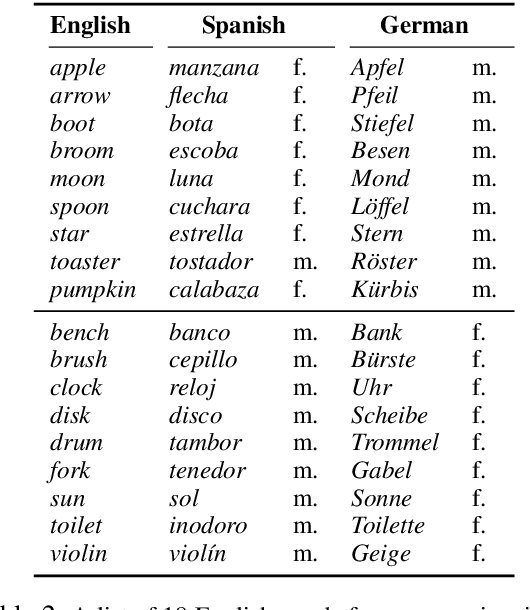
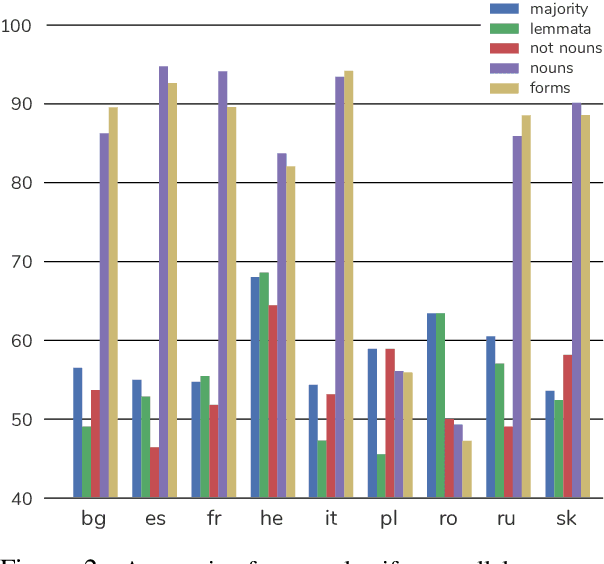
The relation between language and thought has occupied linguists for at least a century. Neo-Whorfianism, a weak version of the controversial Sapir-Whorf hypothesis, holds that our thoughts are subtly influenced by the grammatical structures of our native language. One area of investigation in this vein focuses on how the grammatical gender of nouns affects the way we perceive the corresponding objects. For instance, does the fact that key is masculine in German (der Schl\"ussel), but feminine in Spanish (la llave) change the speakers' views of those objects? Psycholinguistic evidence presented by Boroditsky et al. (2003, {\S}4) suggested the answer might be yes: When asked to produce adjectives that best described a key, German and Spanish speakers named more stereotypically masculine and feminine ones, respectively. However, recent attempts to replicate those experiments have failed (Mickan et al., 2014). In this work, we offer a computational analogue of Boroditsky et al. (2003, {\S}4)'s experimental design on 9 languages, finding evidence against neo-Whorfianism.
Acquisition of Inflectional Morphology in Artificial Neural Networks With Prior Knowledge
Oct 12, 2019Katharina Kann
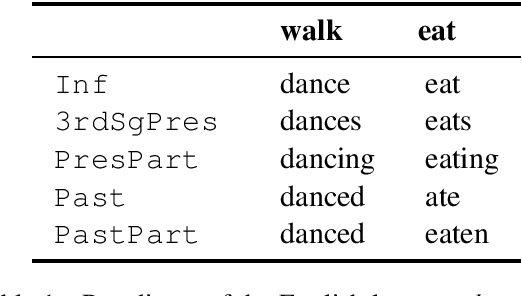
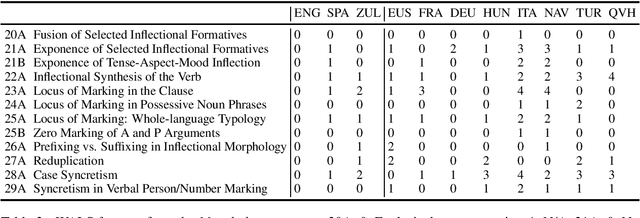


How does knowledge of one language's morphology influence learning of inflection rules in a second one? In order to investigate this question in artificial neural network models, we perform experiments with a sequence-to-sequence architecture, which we train on different combinations of eight source and three target languages. A detailed analysis of the model outputs suggests the following conclusions: (i) if source and target language are closely related, acquisition of the target language's inflectional morphology constitutes an easier task for the model; (ii) knowledge of a prefixing (resp. suffixing) language makes acquisition of a suffixing (resp. prefixing) language's morphology more challenging; and (iii) surprisingly, a source language which exhibits an agglutinative morphology simplifies learning of a second language's inflectional morphology, independent of their relatedness.
Towards Realistic Practices In Low-Resource Natural Language Processing: The Development Set
Sep 15, 2019Katharina Kann, Kyunghyun Cho, Samuel R. Bowman
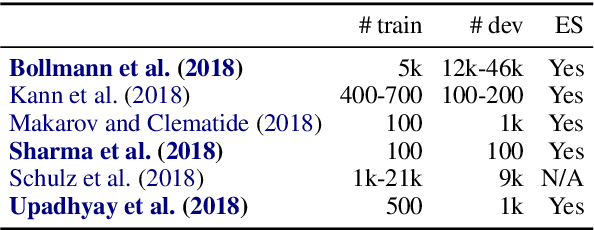
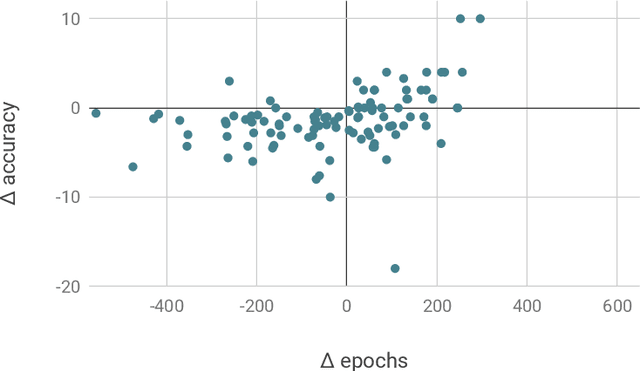
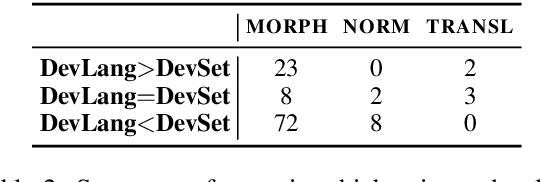
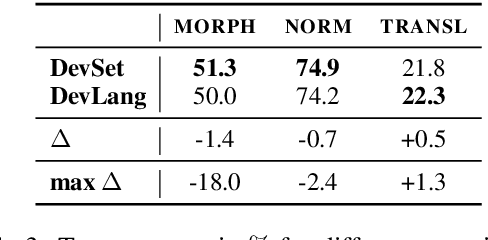
Development sets are impractical to obtain for real low-resource languages, since using all available data for training is often more effective. However, development sets are widely used in research papers that purport to deal with low-resource natural language processing (NLP). Here, we aim to answer the following questions: Does using a development set for early stopping in the low-resource setting influence results as compared to a more realistic alternative, where the number of training epochs is tuned on development languages? And does it lead to overestimation or underestimation of performance? We repeat multiple experiments from recent work on neural models for low-resource NLP and compare results for models obtained by training with and without development sets. On average over languages, absolute accuracy differs by up to 1.4%. However, for some languages and tasks, differences are as big as 18.0% accuracy. Our results highlight the importance of realistic experimental setups in the publication of low-resource NLP research results.
Transductive Auxiliary Task Self-Training for Neural Multi-Task Models
Aug 16, 2019Johannes Bjerva, Katharina Kann, Isabelle Augenstein

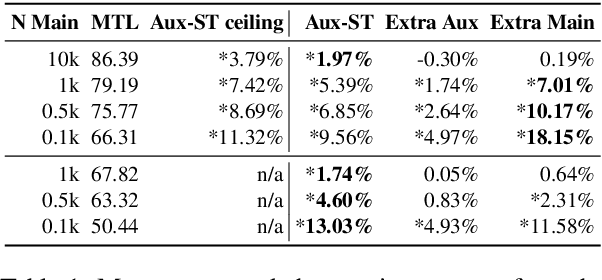
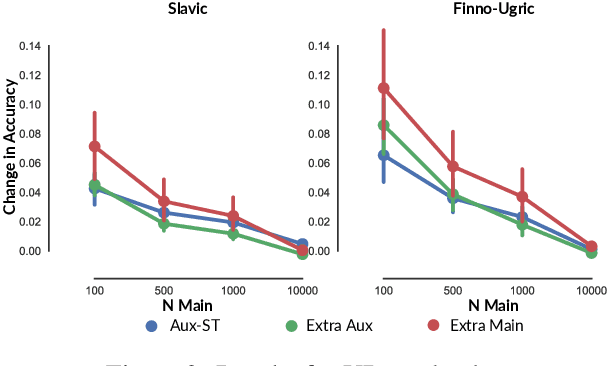
Multi-task learning and self-training are two common ways to improve a machine learning model's performance in settings with limited training data. Drawing heavily on ideas from those two approaches, we suggest transductive auxiliary task self-training: training a multi-task model on (i) a combination of main and auxiliary task training data, and (ii) test instances with auxiliary task labels which a single-task version of the model has previously generated. We perform extensive experiments on 86 combinations of languages and tasks. Our results are that, on average, transductive auxiliary task self-training improves absolute accuracy by up to 9.56% over the pure multi-task model for dependency relation tagging and by up to 13.03% for semantic tagging.
Probing for Semantic Classes: Diagnosing the Meaning Content of Word Embeddings
Jun 09, 2019Yadollah Yaghoobzadeh, Katharina Kann, Timothy J. Hazen, Eneko Agirre, Hinrich Schütze
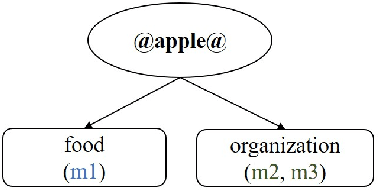
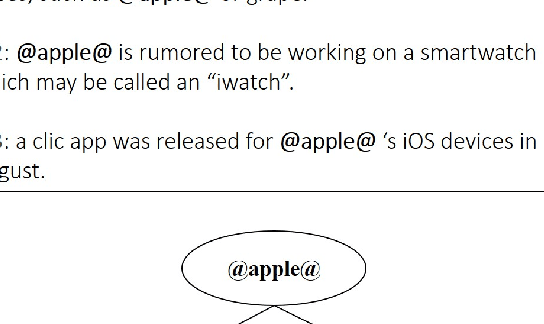
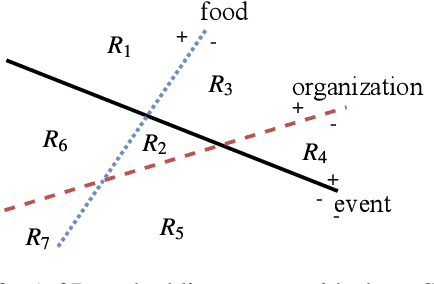
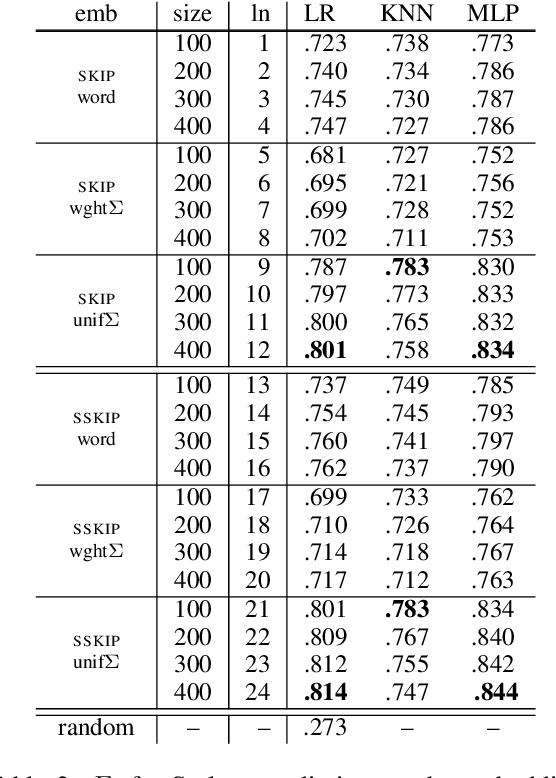
Word embeddings typically represent different meanings of a word in a single conflated vector. Empirical analysis of embeddings of ambiguous words is currently limited by the small size of manually annotated resources and by the fact that word senses are treated as unrelated individual concepts. We present a large dataset based on manual Wikipedia annotations and word senses, where word senses from different words are related by semantic classes. This is the basis for novel diagnostic tests for an embedding's content: we probe word embeddings for semantic classes and analyze the embedding space by classifying embeddings into semantic classes. Our main findings are: (i) Information about a sense is generally represented well in a single-vector embedding - if the sense is frequent. (ii) A classifier can accurately predict whether a word is single-sense or multi-sense, based only on its embedding. (iii) Although rare senses are not well represented in single-vector embeddings, this does not have negative impact on an NLP application whose performance depends on frequent senses.
 Add to Chrome
Add to Chrome Add to Firefox
Add to Firefox Add to Edge
Add to Edge